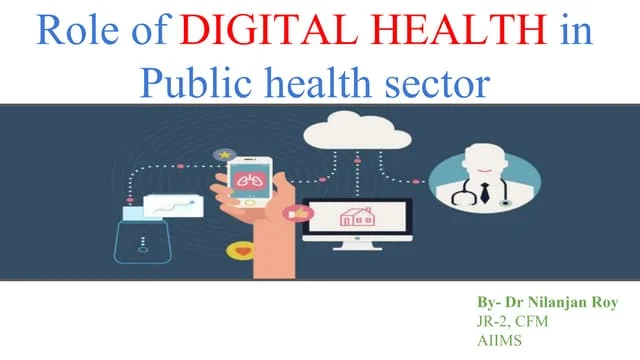
The healthcare landscape is undergoing a dramatic transformation, driven by technological advancements. One of the most significant trends is the rise of telemedicine, the practice of delivering healthcare services remotely using telecommunications technology. This article explores the potential of telemedicine, its impact on patients and providers, and the future of this rapidly evolving field.
Convenience and Accessibility at Your Fingertips
Telemedicine offers a multitude of benefits for patients. It eliminates the need for time-consuming travel to doctor’s appointments, making healthcare more accessible for those in rural areas, with limited mobility, or busy schedules. Virtual consultations allow for greater flexibility, enabling patients to connect with specialists who might not be readily available in their vicinity. Additionally, telemedicine can address concerns about childcare or taking time off work.

Beyond Video Calls: A Spectrum of Services
Telemedicine encompasses a wide range of services beyond video consultations. Here are some key aspects:

Remote Patient Monitoring: This allows healthcare providers to track vital signs, blood sugar levels, or other health data remotely, enabling proactive intervention and improved chronic disease management.

Mental Health Services: Teletherapy offers a comfortable and convenient platform for patients to receive mental health counseling, addressing issues like anxiety, depression, and post-traumatic stress disorder (PTSD).

Store-and-Forward Technology: Images, X-rays, or other medical records can be shared securely between providers for diagnosis and consultation, even when they are geographically separated.
Benefits for Healthcare Providers
Telemedicine offers significant advantages for healthcare professionals as well. It streamlines workflows by allowing for shorter, focused consultations for routine checkups or follow-up appointments. Additionally, it can optimize practice efficiency by reducing overhead costs associated with physical office space and staff. Telemedicine also allows providers to expand their patient base by reaching those who might not otherwise be able to access their services.
The Future of Telemedicine: A Blended Approach
Telemedicine is not meant to replace traditional in-person care entirely. The future lies in a blended approach, leveraging the strengths of both methods. Telemedicine can offer a convenient and efficient way to manage routine checkups, chronic conditions, and mental health concerns, while in-person visits remain crucial for physical examinations and complex diagnoses.
Some Telemedicine Campaign Running In India Are:
1.Pulse Polio Campaign : Telemedicine cannot directly replace vaccination drives, but it can be used for:
- Pre-vaccination consultations to address concerns and answer questions.
- Post-vaccination follow-ups to monitor for any side effects.

Mobilization & Action:
- Community events:
- Organize events in public spaces with games, activities and entertainment to encourage participation.
- Partner with local schools and community leaders to spread awareness.
- Door-to-door campaigns:
- Train volunteers to visit homes and educate families about the importance of vaccination.
- Help address any concerns and ensure all children are reached.
2.Swatch Bharat Abhiyan :
Swachh Bharat Abhiyan, launched on October 2, 2014, by Prime Minister Narendra Modi, is India’s most significant cleanliness campaign. Aimed at realizing Mahatma Gandhi’s vision of a clean India, this mission strives to improve sanitation and hygiene across urban and rural India.

- Social media campaign:
- Encourage citizens to share photos of themselves cleaning their neighbourhoods using #SwachhaBengaluru or #CleanBLR.
- Highlight initiatives by Resident Welfare Associations (RWAs) or waste management startups.
- Educate & Inform:
- Organize workshops and awareness campaigns in schools and colleges.
- Encourage students to become Swachh Bharat ambassadors.
Major Components In Swatch Bharat Abhiyan :
- Construction of Toilets
- Rural Areas: Building individual household latrines (IHHL) and community toilets.
- Urban Areas: Providing toilets in slums and public places.
- Waste Management
- Door-to-Door Collection: Regular garbage collection from households.
- Segregation of Waste: Encouraging separation of biodegradable and non-biodegradable waste.
- Recycling Initiatives: Setting up recycling plants and promoting the use of recycled products.
- Public Awareness Campaigns
- Mass Media Campaigns: Utilizing TV, radio, and social media to spread awareness.
- Educational Programs: Incorporating sanitation education in school curricula and conducting workshops.
- Clean Public Spaces
- Swachh Bharat Volunteers: Mobilizing volunteers for cleanliness drives.
- Corporate Social Responsibility (CSR): Encouraging companies to participate in cleanliness initiatives.
3.Ayushman Bharat (Pradhana Mantri Jan Arogya Yojana)] :
Telemedicine can play a role in expanding Ayushman Bharat’s reach by facilitating remote consultations with specialists, especially in underserved areas.
To effectively promote the Ayushman Bharat Yojana (AB-PMJAY) in Bengaluru, consider tailoring content to the local audience and addressing their specific needs. Here are some ideas:

Raise Awareness and Understanding:
- Slogan: Develop a catchy slogan that clearly conveys the scheme’s benefits. For example:
- “Ayushman Bharat: Swastha Bhaarat” (Ayushman Bharat: Healthy India)
- “Arogya Hakku, Nimage Hakku” (Healthcare Right, Your Right)
- Social media campaign:
- Create informative posts and videos explaining the eligibility criteria, benefits, and application process for AB-PMJAY.
- Use local influencers to share their experiences and encourage others to enroll.
- Address common misconceptions and FAQs about the scheme.
4.National Nutrition Mission :
Telemedicine consultations with nutritionists can be offered remotely for guidance on diet and healthy eating habits.

Raise Awareness and Understanding:
- Slogan: Develop a catchy and memorable national slogan that emphasizes the importance of good nutrition. Examples:
- “Bharat Poshit, Bharat Roshit” (Nourished India, Bright India)
- Social media campaign:
- Share informative posts and videos on various aspects of nutrition, like:
- Importance of balanced diet for different age groups (children, pregnant women, lactating mothers, adolescent girls).
- Importance of good hygiene practices alongside nutrition.
- Partner with nutrition experts and influencers to create engaging content.
- Organize contests and quizzes to increase audience participation.
- Share informative posts and videos on various aspects of nutrition, like:
.
5.COVID-19 Vaccination Drive : Telemedicine cannot directly replace vaccination drives, but it can be used for:
- Pre-vaccination consultations to address concerns and answer questions.
- Post-vaccination follow-ups to monitor for any side effects.

Implementation : Strong central-state teamwork gets vaccines out fast: clinics, hospitals, even mobile units bring them to you!
Healthcare Workforce: Training doctors, nurses, and volunteers to get shots in arms across India.
Challenges :
Vaccine Hesitancy: Addressing vaccine hesitancy and misinformation among certain sections of the population.
Logistical Issues: Distributing enough vaccines across a huge, diverse country..
what are Digital Health Initiatives ?
Digital health initiatives are programs and tools that use technology to improve healthcare. They come in many forms, but some common examples include:

- Telehealth: Providing healthcare services remotely, like video consultations with doctors.
- Electronic health records (EHRs): Secure digital storage of medical history for better care coordination.
- Wearable devices and health apps: Tools that track health data (heart rate, sleep patterns) and promote healthy habits.
- Disease surveillance systems: Digital platforms that monitor disease outbreaks and inform public health actions.
- Health information portals: Online resources for patients to access reliable health information
Role of Digital Health In India:

Digital health plays a big role in boosting public health by:
- Improving access: Online platforms and telehealth connect people with healthcare providers, especially in remote areas.
- Empowering patients: Apps and wearable devices let people track health data and manage conditions.
- Boosting efficiency: Digital tools streamline workflows, saving time and resources for healthcare workers.
- Informing decisions: Data analysis helps public health officials track outbreaks and target interventions
Some of Digital Health Initiatives are:
e-Sanjeevani: Telemedicine Service :
e-Sanjeevani is a flagship telemedicine initiative by the Ministry of Health and Family Welfare, Government of India. It aims to provide healthcare services to people in rural and urban areas, ensuring that medical consultation is just a click away. Launched in November 2019, e-Sanjeevani has become particularly significant during the COVID-19 pandemic.
Aarogya Setu: Contact Tracing and Health Information :
Aarogya Setu is a mobile application developed by the Government of India to aid in contact tracing, syndromic mapping, and self-assessment during the COVID-19 pandemic. Launched in April 2020, the app has been a critical tool in the country’s fight against COVID-19 by providing real-time health information and alerts to users.
Conclusion :
Telemedicine has emerged as a transformative force in healthcare delivery, leveraging the power of digital technologies. By breaking down geographical barriers, increasing convenience, and improving access to care, it offers a more patient-centered and efficient approach. As technology continues to evolve and telemedicine becomes more widely adopted, we can expect even greater advancements in remote diagnosis, treatment, and chronic disease management. Telemedicine holds immense potential to revolutionize the healthcare landscape, making it more accessible, affordable, and effective for all. However, addressing challenges like digital equity, privacy concerns, and integration with traditional healthcare systems will be crucial in fully realizing its potential. By embracing innovation and collaboration, we can ensure that telemedicine fulfills its promise of a healthier future for everyone.




